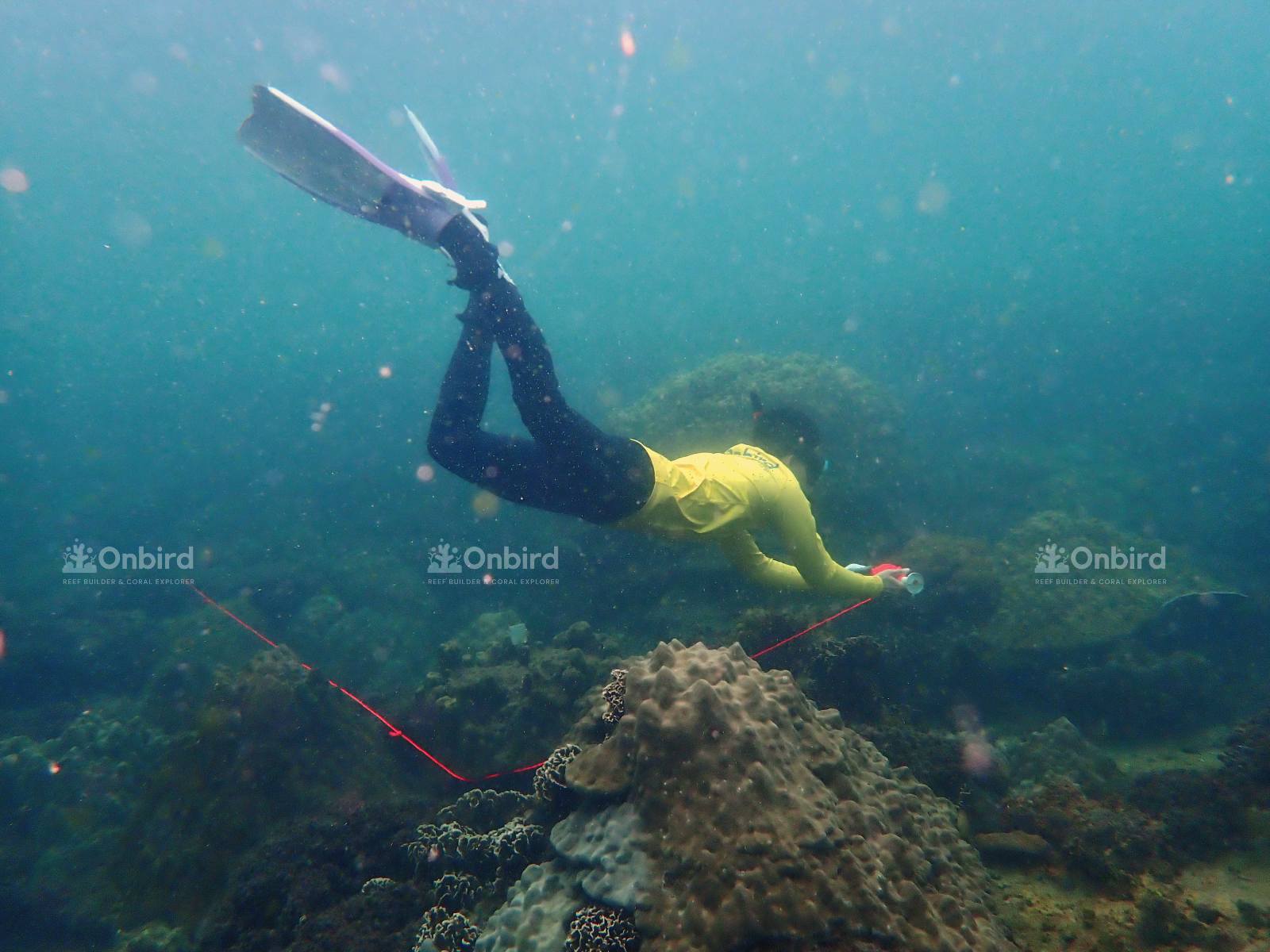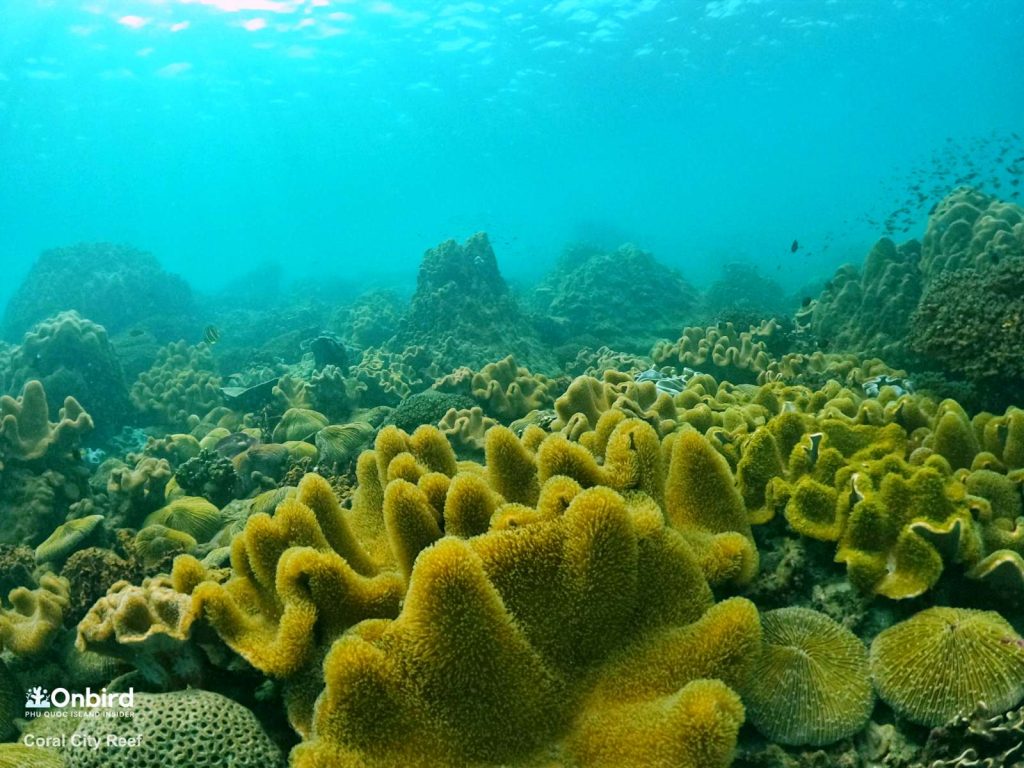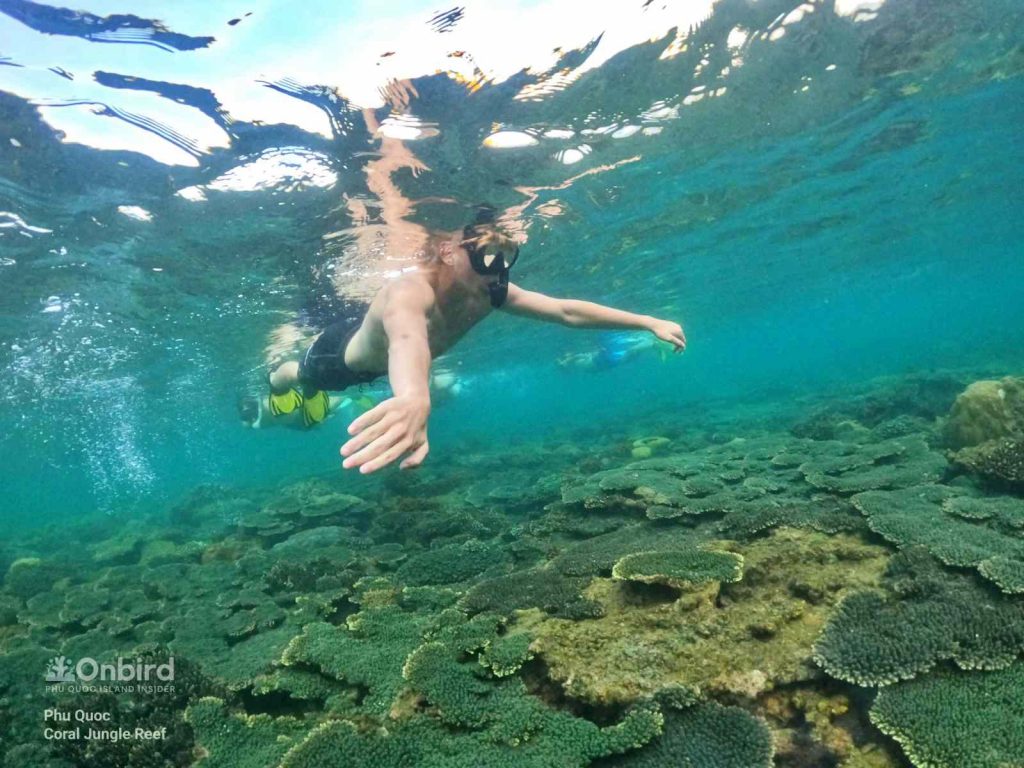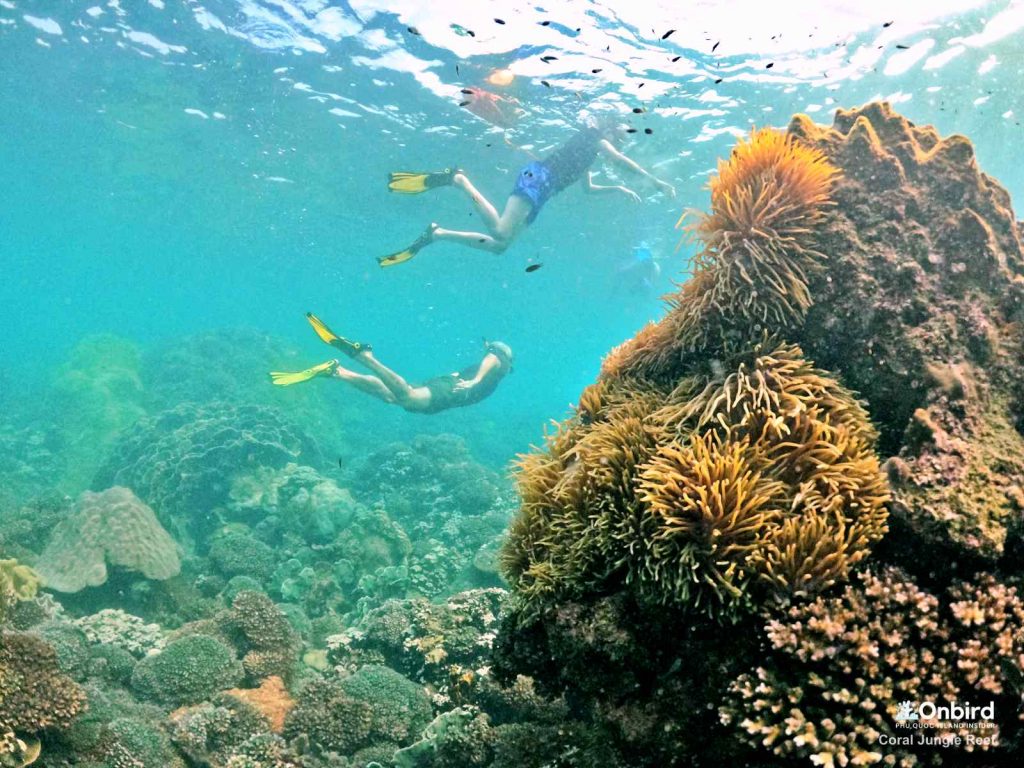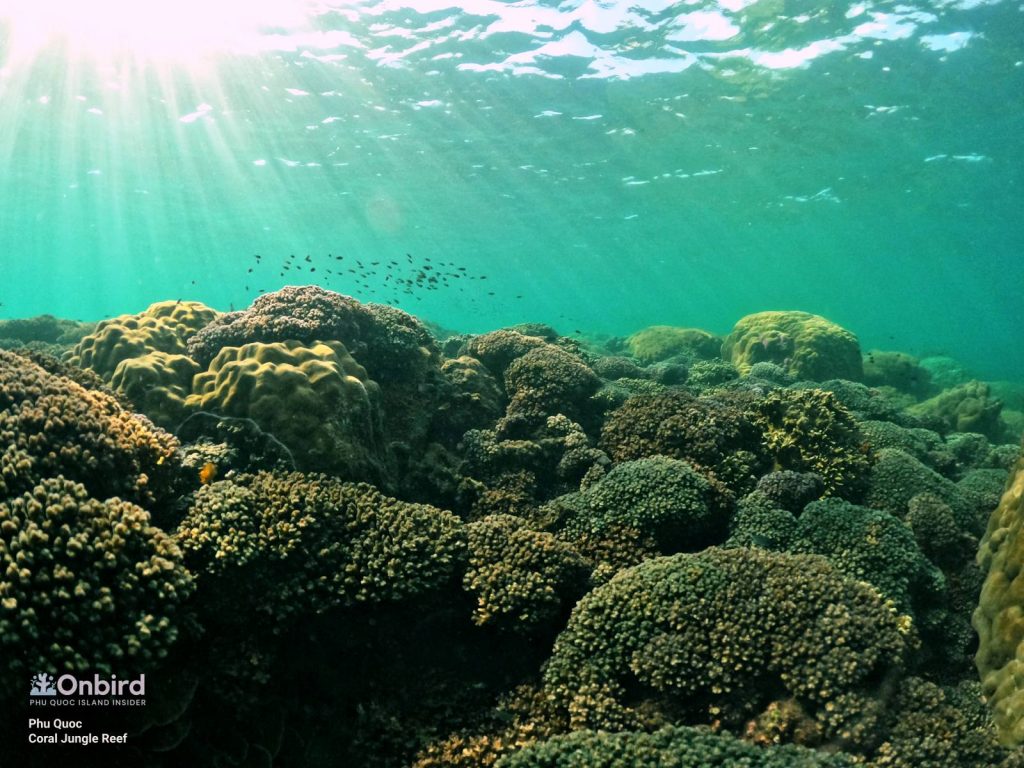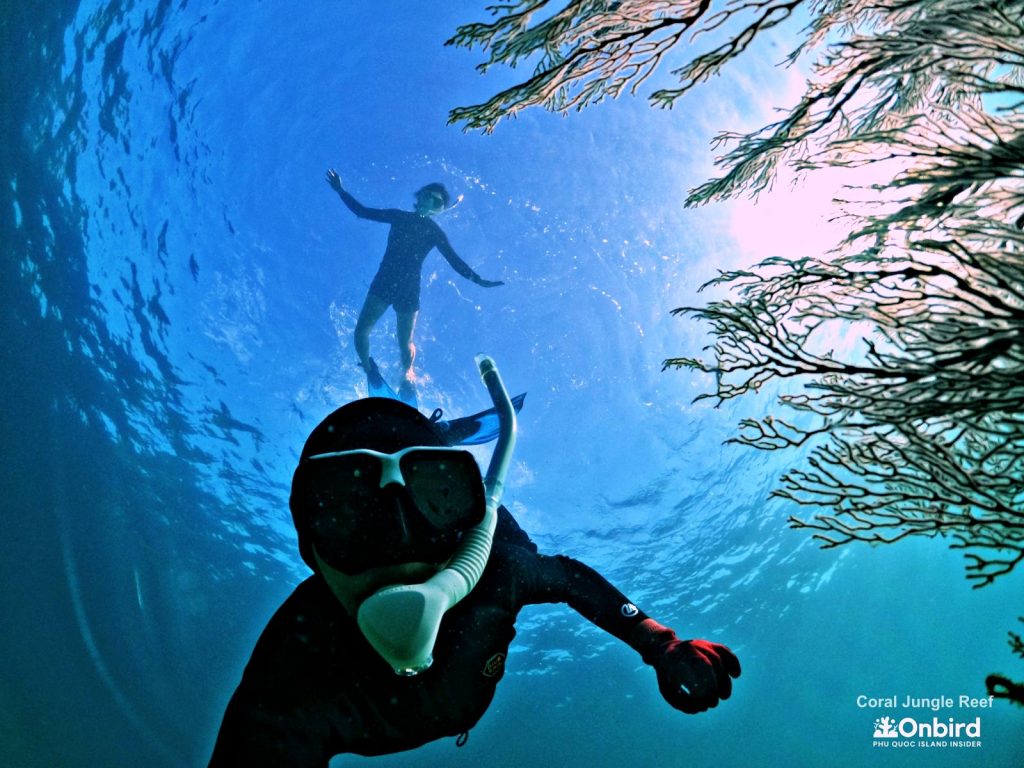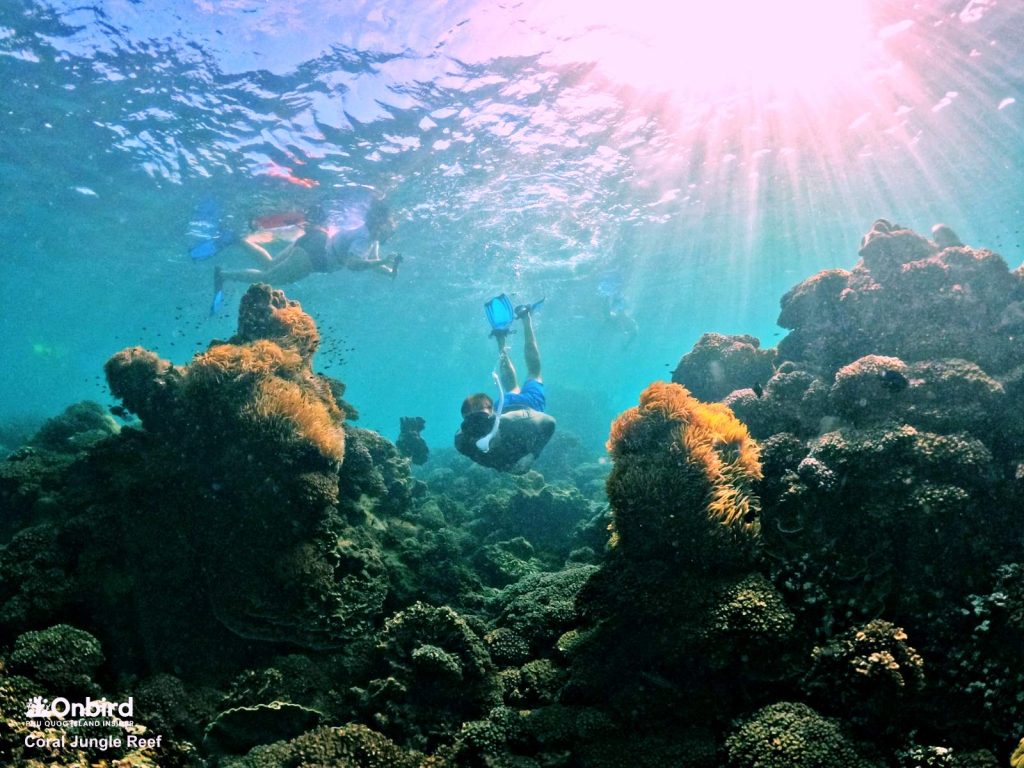The Coral Jungle Reef, Phu Quoc Island is the healthiest coral reef with the highest coverage of coral (around 82.5%) across Phu Quoc Island. This is considered the healthiest coral reef in the whole of Vietnam where you will get lost in the jungle of healthy corals.
Here are some informative journals our team has recorded recently (updated as of Dec. 2022).
MAIN CONTENTS
ABOUT THE CORAL JUNGLE REEF
- Depth range: 0.3 – 9m
- Reef type: Fringing Reef
- Coral Health Status: Very healthy, alive coral areas account for 99% of the reef
- Coral Species: Table Coral, Cauliflower Coral, Mushroom Coral, Staghorn Coral, Octopus coral, Fiji Leather Coral, Brain coral, Giant Barrel Sponge, Sponges, Porite Coral, Cactus Coral, Cabbage Coral, Leaf Coral, Anemone…
CAUTION: Strong currents are common in this area. It is advisable not to venture into the coral reef without a thorough understanding of the conditions.
OPTIMAL TIME TO EXPLORE THIS CORAL JUNGLE REEF
During the dry season from October to April, it is considered the optimal time for engaging in snorkeling and scuba diving to explore the Coral Jungle Reef. Conversely, these activities are less favorable in the Coral Jungle Reef during the rainy season. Particularly noteworthy is the Coral Jungle Reef, which stands out as the premier location for scuba diving and snorkeling in Phu Quoc, especially between November and January due to favorable water conditions.
The Coral Jungle Reef boasts a remarkable 99% coverage of live corals. This high percentage can be attributed to the robust currents in the area, which act as a natural barrier, limiting human access to the reefs. These currents facilitate the dispersion of coral eggs, promoting the growth and resilience of the reef. To explore this area effectively, a precise water condition tracker is essential to determine the optimal visiting times. Consider joining our small-group soft-adventure snorkeling trip or booking a private snorkeling excursion to experience the Coral Jungle Reef and immerse yourself in the historic charm of Phu Quoc.
INTACT AND HEALTHY CORAL
The Coral Jungle reef, situated in a unique location known for its strong currents and high waves, presents challenging water conditions unsuitable for novice divers or beginners, and even experienced individuals may find it demanding. Despite these adversities, the reef boasts remarkable vitality with a notably high coral coverage. Our assessments indicate that the Coral Jungle Reef stands out as the healthiest coral reef in Phu Quoc, boasting a 95% live coral ratio.
In South Phu Quoc, there are opportunities to discover exceptionally diverse coral reefs, including the North-east Coral Reef, Half-moon Reef and impressive large coral formations like the Coral Mountain (the largest cactus coral colony on Phu Quoc) and the Coral Hill (the second-largest flowerpot coral colony on the island). These sites are monitored daily by Onbird’s internal water conditions forecasting model.
HIGH BIODIVERSITY CORAL REEF
Coral Jungle Reef is renowned for its remarkable biodiversity, boasting over 20 distinct coral species within its expansive thousand-square-meter coral garden. The shallow waters of the reef have fostered the growth of extensive colonies of hard corals, creating vast coral gardens. This growth is facilitated by the presence of zooxanthellae algae in the coral polyps, which thrive in shallow waters due to ample sunlight exposure. Through photosynthesis, the zooxanthellae algae generate oxygen, aiding in waste removal, and sediment elimination, and supplying hard corals with essential nutrients such as glucose, glycerol, and amino acids. These nutrients are crucial for the production of proteins, fats, and carbohydrates, as well as the formation of calcium carbonate, which serves as the building blocks for the reef.
Coral Jungle Reef stands out as one of the most biodiverse coral reefs not only in Phu Quoc but also in all of Vietnam. This distinction is attributed to its unique underwater topography, characterized by nutrient-poor water and robust currents, facilitating the dispersion of coral larvae.
Video of soft-adventure snorkeling discovering the Coral Jungle Reef, North Phu Quoc
2024 Summer Heat Wave and Massive Coral Bleaching Event
90% corals got bleached during the 2-month heath wave in Phu Quoc.
